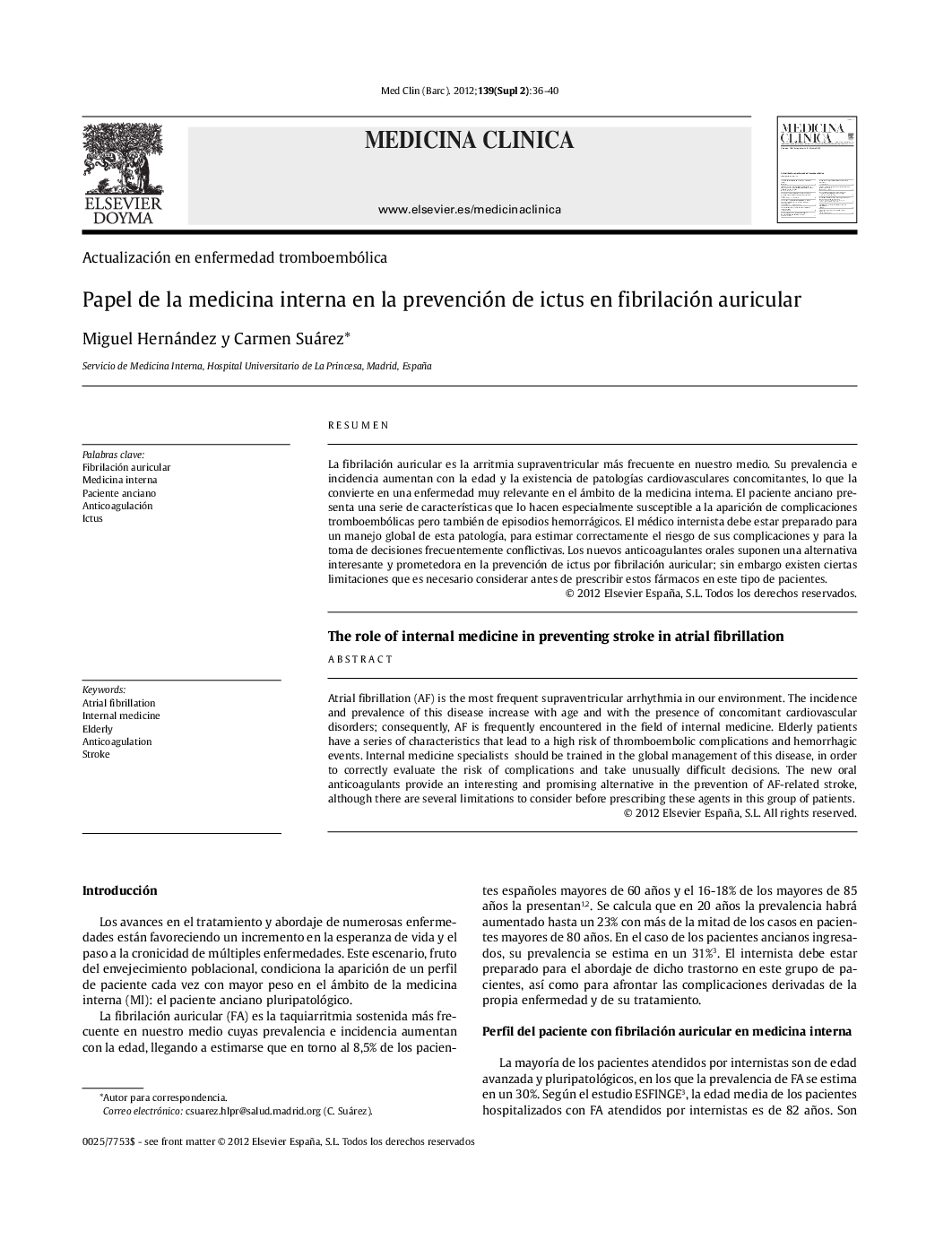| Article ID | Journal | Published Year | Pages | File Type |
|---|---|---|---|---|
| 3799644 | Medicina Clínica | 2012 | 5 Pages |
ResumenLa fibrilación auricular es la arritmia supraventricular más frecuente en nuestro medio. Su prevalencia e incidencia aumentan con la edad y la existencia de patologÃas cardiovasculares concomitantes, lo que la convierte en una enfermedad muy relevante en el ámbito de la medicina interna. El paciente anciano presenta una serie de caracterÃsticas que lo hacen especialmente susceptible a la aparición de complicaciones tromboembólicas pero también de episodios hemorrágicos. El médico internista debe estar preparado para un manejo global de esta patologÃa, para estimar correctamente el riesgo de sus complicaciones y para la toma de decisiones frecuentemente conflictivas. Los nuevos anticoagulantes orales suponen una alternativa interesante y prometedora en la prevención de ictus por fibrilación auricular; sin embargo existen ciertas limitaciones que es necesario considerar antes de prescribir estos fármacos en este tipo de pacientes.
Atrial fibrillation (AF) is the most frequent supraventricular arrhythmia in our environment. The incidence and prevalence of this disease increase with age and with the presence of concomitant cardiovascular disorders; consequently, AF is frequently encountered in the field of internal medicine. Elderly patients have a series of characteristics that lead to a high risk of thromboembolic complications and hemorrhagic events. Internal medicine specialists should be trained in the global management of this disease, in order to correctly evaluate the risk of complications and take unusually difficult decisions. The new oral anticoagulants provide an interesting and promising alternative in the prevention of AF-related stroke, although there are several limitations to consider before prescribing these agents in this group of patients.
